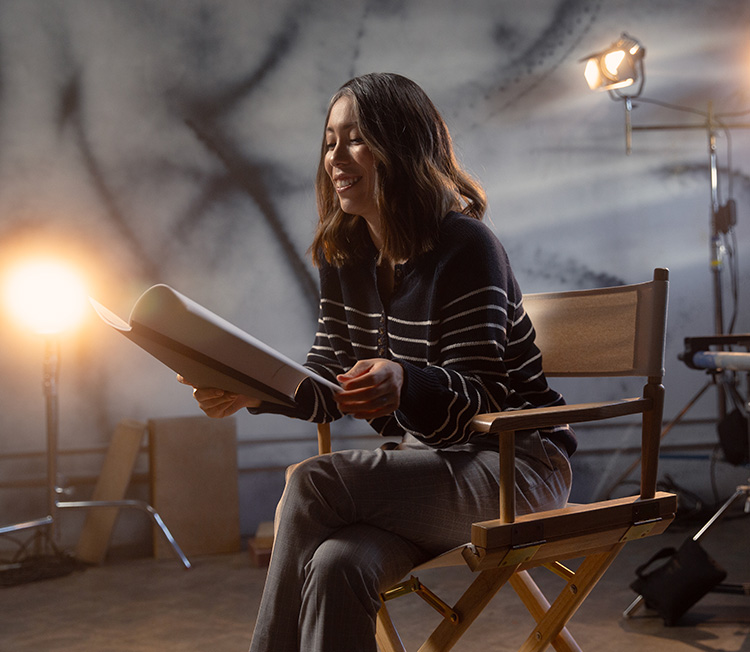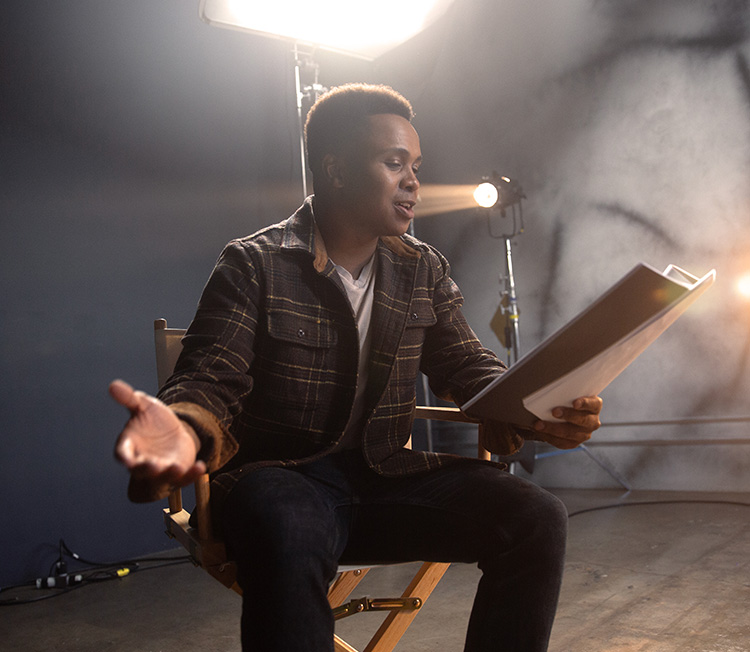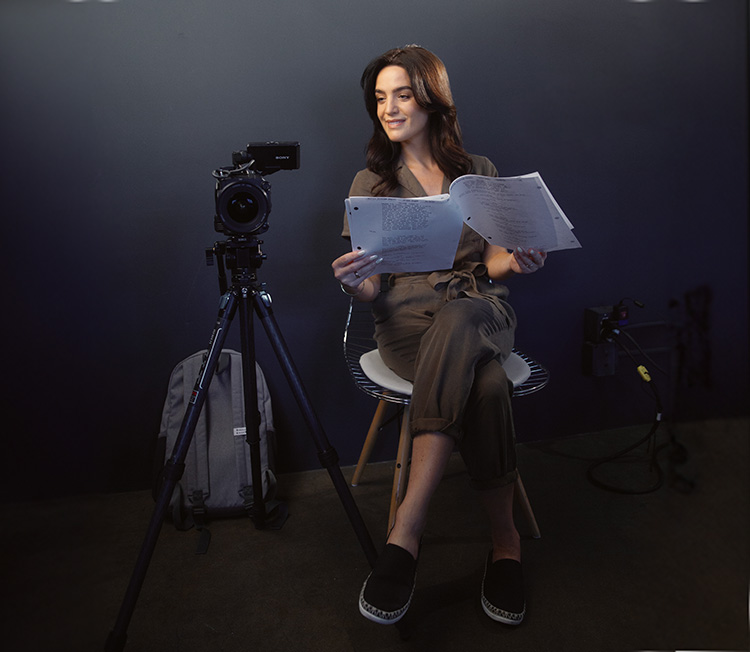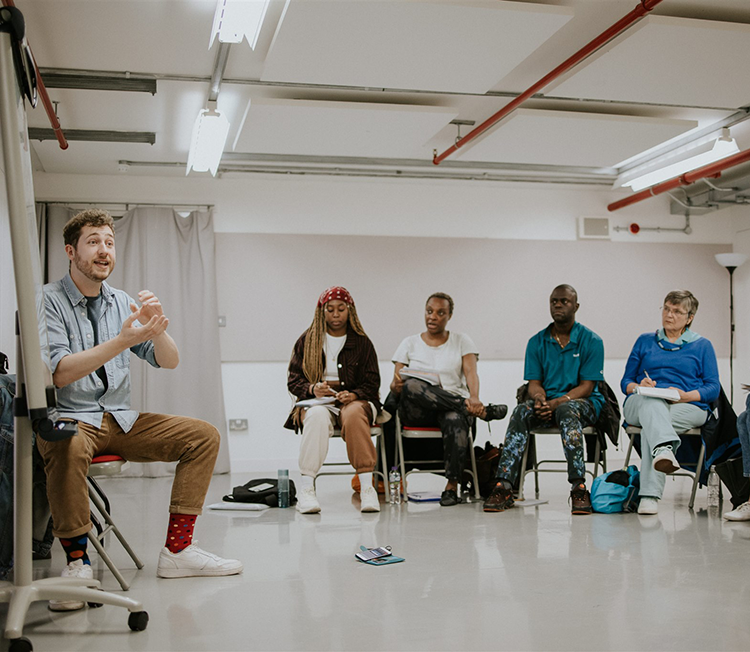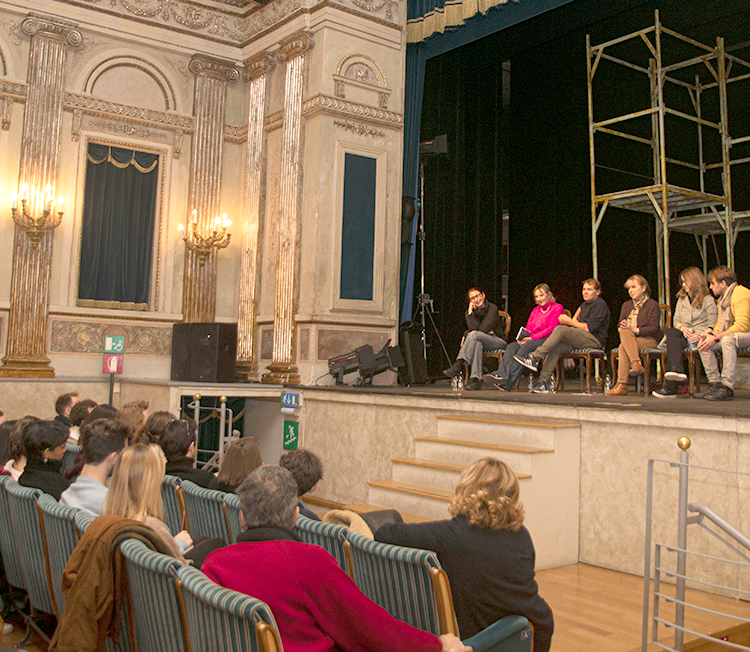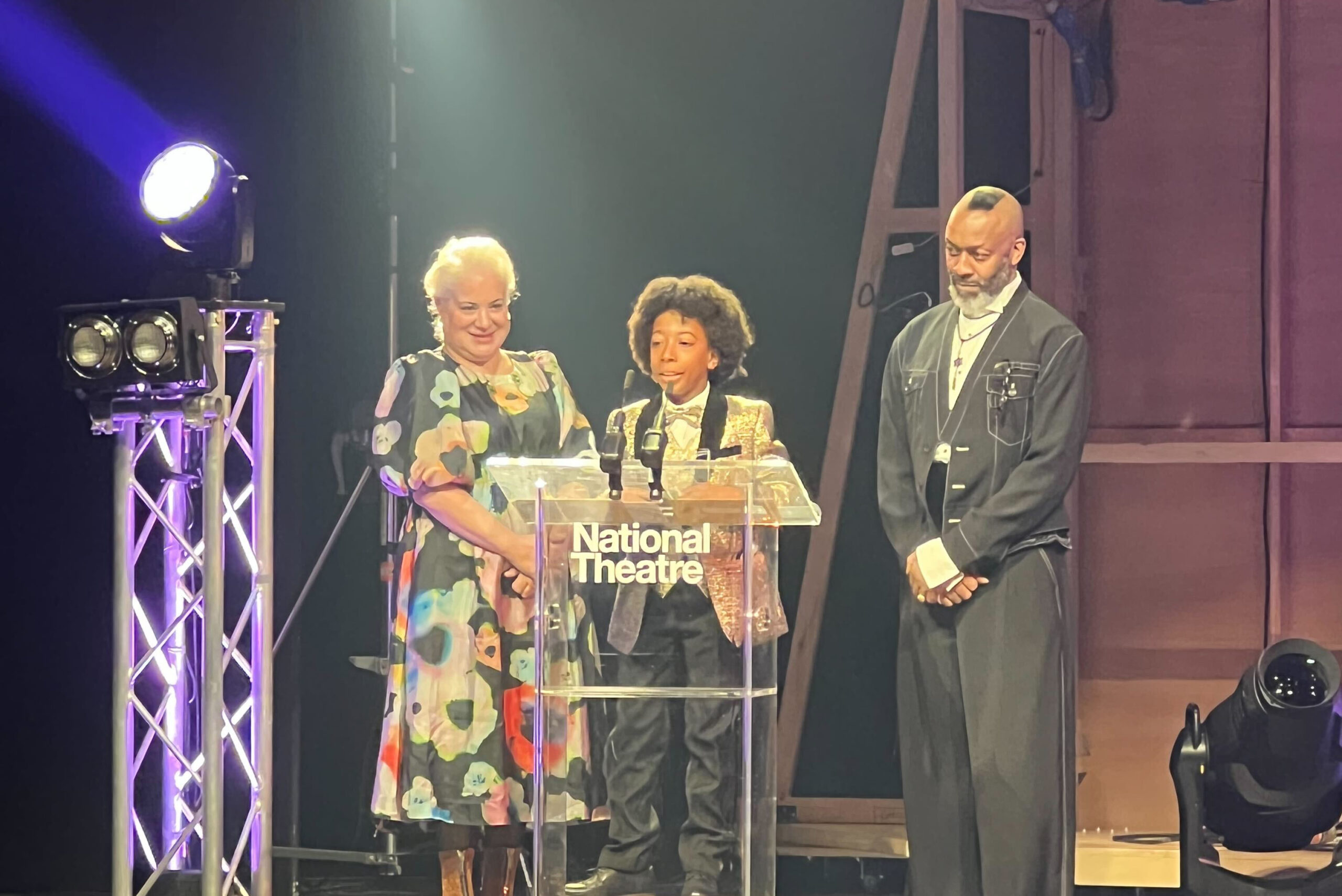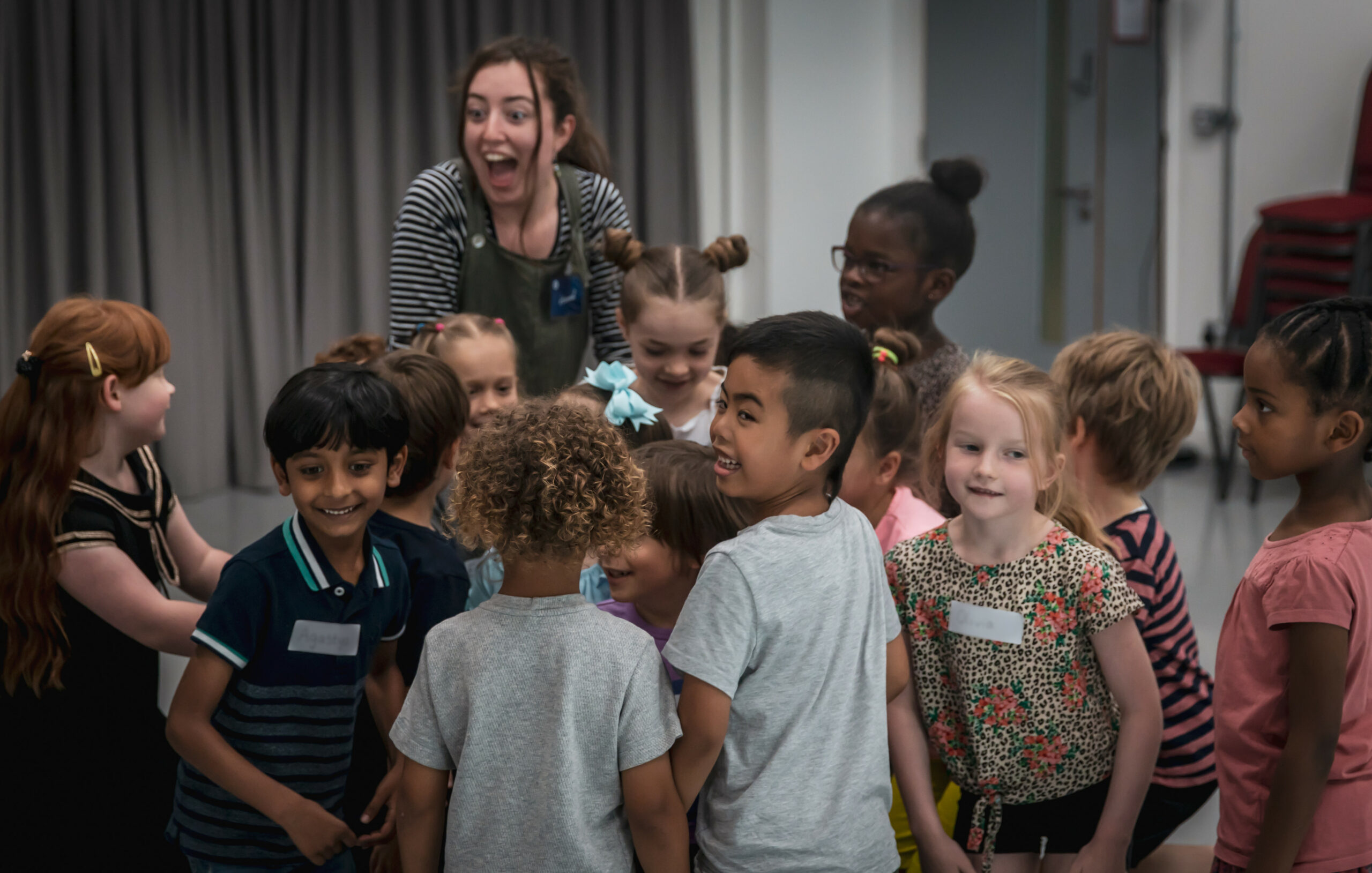How intimacy coordinators look after you during production and what they do to ensure your wellbeing during intimate scenes
The role of an intimacy coordinator is still relatively new to the industry – only beginning to increase in popularity in 2017. But intimacy coordinators aren’t for show: they’re an important ally for performers to have when it comes to scripting, choreographing and filming intimate scenes. And this is particularly important when these scenes involve young performers.
David Thackeray has worked as an intimacy coordinator – with both actors and young performers – on Heartstopper, Sex Education, White Lotus, It’s a Sin, Foundation and Industry. He has also worked as an actor and director, so has experience from both sides of the process.
At a recent Spotlight event, David explained the purpose of his role, and why performers should feel empowered to say ‘no’ if they’re ever uncomfortable about a scene they’re asked to film. Here’s what he shared:
What is an intimacy coordinator?
Before intimacy coordinators, there was an attitude of ‘work it out for yourselves,’ or, ‘just do it,’ when it came to intimate scenes. Now, an intimacy coordinator is brought on-set for the good of you – the actor – so it’s important to be aware of what we do and how we can help you.
The role of an intimacy coordinator
My role is to open communication and transparency when working with intimate content. This is to ensure you feel comfortable, and to make sure you feel like you have a voice when it comes to working in these moments. Open communication is for the whole production, so everybody understands what the scenes might include, what nudity there’s going to be, etc.
The root and core of my work is consent. Marking out boundaries, ensuring you have a clear understanding of what you’re going to need to perform, and respecting what you’re happy to show and do. I’m there to take away the mystery of how intimate scenes are shot and how you’re meant to perform in these moments.
An intimacy coordinator’s process
It begins with me talking to the producer and director to hear their vision of the intimate moments. Then, if we’re talking about young actors, I talk to the parent or guardian first to find out how they want me to work with their child. From that point, they’re able to express any concerns or questions. Most of the time, young actors ask, “Why is that scene there? How is that going to forward my character’s journey or the story?”
Then we come into rehearsals, and I’ll choreograph the intimate moments beat by beat – very much like a dance or a fight – so they know where they’re touching, how the scene starts, and, most importantly, how it finishes.
When will an intimacy coordinator be brought on board?
It varies. For shows like Heartstopper and Sex Education, they brought me in early on in pre-production where we would workshop or rehearse, so the actors could get to know each other. It’s nothing to do with intimacy – it’s just a way for them to open up scenes and the relationships of these characters, and work in a safe and comfortable way. Having me there allows them to go, “Oh, that’s the person who’s going to be solely there for those moments.”
Having a voice on behalf of the actors
A scene wouldn’t go ahead unless I felt like things had been done properly. You don’t want to shoot a scene when an actor doesn’t feel ready to do something in that moment, or they don’t feel comfortable with what they’ve agreed with. I put in place a time-out so the actor can say ‘no’ even on the day. Then we might change the choreography slightly, add a little bit more clothing, or adjust the camera so the actor feels completely heard.
The experiences of an intimacy coordinator
Being an intimacy coordinator wasn’t a career that I looked to do – because it didn’t exist when I was acting. I went through a couple of moments as an actor where I was asked to do full nudity on stage and was promised the rehearsal would be a closed rehearsal. But it wasn’t closed, and there were about 40 people in the room. I want to help prevent similar experiences happening to other actors.
Working with young actors on Heartstopper
Heartstopper was a great show to work on. Heartstopper, and I think Sex Education, reached out to all the crew and cast and said, “If you feel like you would like to share your pronouns, we’ll put it on the call sheet.”
The way it was cast, and the way that everyone worked created a safe space for everyone to work in, communicate and talk.
As an intimacy coordinator, you have to listen to the people who are playing these characters. First, I always go by what’s on the page, and I say to them, “We’re going to treat this just like any other scene. Let’s talk about it technically.”
When it comes to the character and the emotion, that’s very much with the director. As long as I know those things, and as long as the artist feels comfortable in talking to me about them as well, it’s creating that safe space for them to be able to communicate effectively.
Working with different genders
Occasionally, I’ve had people request to work with someone of their own gender. Or if I’ve thought, ‘that might require a different gender or someone specific for this,’ I would flag that with the production, or say to the artists, “If you don’t feel comfortable with me, I totally get it. I’ve got another person over here.”
I’d still take care of the whole show, but then I would bring in certain people who have certain tools I don’t have. Like giving birth scenes, for example – I wouldn’t say I’m the most equipped to be able to do those.
Does an intimacy coordinator have to be brought on board?
There are different levels. Heartstopper was different because of the age, and because the show is literally about intimacy and relationships, so it made sense for me to be around for all kinds of scenes. It’s up to the production to send over the scripts for the intimacy coordinator to break down each scene, each moment of intimacy, and say, “I’ve highlighted this, but you might not necessarily need me.”
I may have questions as well, like “So they’ve woken up after an intimate scene in bed and they’re getting out of bed, what are they wearing? Or what are they not wearing?”
It’s important for young actors, especially early on, to say, “We want an intimacy coordinator,” or “We want to work with these [intimacy] guidelines.”
Intimacy on stage vs screen
The one thing actors need to know about intimate scenes in theatre is that you’re doing them every night. It’s not a one-off like on screen – there isn’t just a quick ‘action’ and ‘cut’. It’s a nine-to-five kind of thing. You may also have all different kinds of angles, so you can’t get away with wearing jogging bottoms when a camera is just honing in on one section.
It’s about breaking down what you’re happy to show, and having those factors in place, and a little bit more stage trickery. I won’t be there every night, so I’d be working with a stage manager who will note things down.
Making room for organic performance
You want a scene to be character driven, and there is the concern that carefully choreographing an intimate scene can limit an actor’s performance. I agree that actors need to be able to give a spontaneous and organic performance, and, with this process, they can go further. They feel comfortable and confident knowing the boundaries of where they can play and where they can touch. So actually, it doesn’t limit it.
Nudity garments
Nudity garments are something that we will bring up with the costume department early on. Once I’ve identified the intimate moments in the script, I’ll say, “Right, we’re 100% going to need a genitalia pouch or other nudity garments” to make sure that they’ve got them in stock.
For other scenes, you could be wearing a full swim costume if you’re in a bath with lots of bubbles, for example. Sometimes we’d have skin tone underwear that you can wear, but not all intimacy coordinators carry a kit bag. Some liaise with the costume department and collaborate in that way.
If you know that you’ve got an intimate scene coming up, and you still haven’t been told what you’re wearing, there’s no harm in asking, “Can I talk to the costume department or the intimacy coordinator about nudity garments?”
Body doubles in intimate scenes
When it comes to doubles, you have to sign off that specific, chosen body to represent yours. That’s something an agent would have to try to keep in the contract.
Finally…
It’s important to note that I or whatever intimacy coordinator you’re working with may not be in contact until a week or two before you do an intimate scene.
Please do not audition for or take a role if you know that you don’t feel confident or comfortable when it comes to the nudity or intimacy it describes. There will always be another job down the line.
From all of us at Spotlight, thank you, David, for sharing your experience and expertise on intimacy coordination.
Heartstopper and Sex Education are available to stream on Netflix now.
This article was written from notes taken at our ‘Expert Hour with David Thackeray: For Parents, Guardians & Young Performers’ event. If you’re a Spotlight member and would like to sign up for future events like this one, check your membership email settings to ensure you’ve opted into receiving our newsletters.
 Originally trained in acting, David Thackeray graduated from The Royal Central School of Speech and Drama and has been working professionally as an actor, a director, and, since 2017, an intimacy coordinator. As one of the UK’s first and leading intimacy coordinators, David helped establish and standardise the practice on both screen and stage. He understands what it takes to execute an intimate scene while maintaining artistic integrity and providing a space for consent and boundaries to exist. Some of his credits include Netflix’s Sex Education, Heartstopper, The Crown, and HBO’s Industry.
Originally trained in acting, David Thackeray graduated from The Royal Central School of Speech and Drama and has been working professionally as an actor, a director, and, since 2017, an intimacy coordinator. As one of the UK’s first and leading intimacy coordinators, David helped establish and standardise the practice on both screen and stage. He understands what it takes to execute an intimate scene while maintaining artistic integrity and providing a space for consent and boundaries to exist. Some of his credits include Netflix’s Sex Education, Heartstopper, The Crown, and HBO’s Industry.
Headshot credit: YellowBellyPhoto
Image credit: Teddy Cavendish / Netflix

